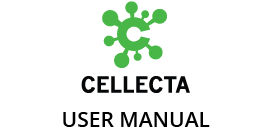Analysis of barcode representation in the experimental samples first requires amplification of the barcode portion of the integrated lentiviral constructs from sample genomic DNA. Second, the amplified barcoded PCR product needs to be cloned in a TA-cloning vector. Third, subsequent Sanger sequencing of the barcodes present in bacterial clones will allow you to measure representation of the each barcode in the mixed population of founder cells labeled with a different barcodes.
For 10-Barcode Panels with Cat.# BCXP3RPM10-V, if the labeled cell pool(s) have been mixed with cells transduced with the CloneTracker™ XP 5M or 50M Barcoded Library, Next-Gen Sequencing (NGS) of barcodes may be used to quantify the relative number of progeny from each labeled founder population. For using NGS for barcode representation analysis, please refer to the CloneTracker XP Barcoded Library protocol.
For 5- or 10-Barcode Panels with Cat.#s BCRPP5-V or BCRPP10-V, if the labeled cell pool(s) have been mixed with cells transduced with the CloneTracker™ 50M Barcoded Library, Next-Gen Sequencing (NGS) of barcodes may be used to quantify the relative number of progeny from each labeled founder population. For using NGS for barcode representation analysis, please refer to the CloneTracker 50M Barcoded Library protocol.
NOTE: The 4-Barcode-Plus constructs are not compatible and will not be read with CloneTracker™ Barcode Library barcodes during library amplification and NGS.
The barcode amplification procedure below has been developed and optimized for conventional Sanger sequencing.
- Pooled barcodes should be amplified by two rounds of PCR using Taq DNA Polymerase.
- The protocol was optimized using a ThermoFisher Veriti® Thermal Cycler. Use of other PCR enzymes and/or thermal cyclers may require additional optimization.
- For barcoded cell populations with fewer than 1 million cells, we recommend to purify genomic DNA using the QIAGEN QIAamp DNA Micro Kit, according to the manufacturer’s instructions. For barcoded cell populations with between 1 million and 10 million cells, you can use the QIAGEN DNeasy Blood and Tissue Kit for genomic DNA isolation.
- In addition to experimental barcoded cell samples, please purify genomic DNA from parental, non-infected cells. This genomic DNA could be used as a negative control in the barcode amplification step.
Need more help with this?
Contact Us

